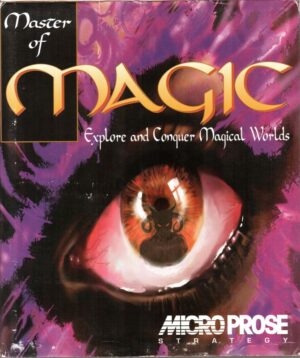Retro Replay Review
Gameplay
Knytt offers a deceptively simple control scheme that belies its depth of exploration and puzzle-solving. You guide Little Knytt through a sprawling, interconnected world, relying solely on his ability to jump, wall jump, and climb straight walls. Without any means to attack, your focus shifts entirely to navigation and strategy, carefully timing jumps and plotting routes through varied terrain. The introduction of two key abilities—a shining beam of light to pinpoint nearby items and a collection tracker—adds an element of methodical scavenging as you piece together the tools needed to repair your crashed UFO.
(HEY YOU!! We hope you enjoy! We try not to run ads. So basically, this is a very expensive hobby running this site. Please consider joining us for updates, forums, and more. Network w/ us to make some cash or friends while retro gaming, and you can win some free retro games for posting. Okay, carry on 👍)
The platforming challenges range from subtle precision jumps to multi-screen navigation puzzles. Each segment of the world introduces a fresh twist: slippery platforms in the clouds, narrow ledges in the underground caverns, and moving obstacles that demand patience and practice. While most background creatures and objects are purely decorative, a handful of hostile critters force you to respect proximity and plan alternate routes. When danger draws near, Knytt’s glowing red outline is a simple yet effective alert that keeps you on edge.
Exploration is at the heart of Knytt’s design. There is no pause menu to consult, no map to freeze your progress—just the open world and your wits. White tiles scattered throughout the level serve as save points, rewarding thorough investigation and alleviating the frustration of repeating lengthy segments. Hidden passages and breakable walls whisper promises of shortcuts and secrets, encouraging multiple playthroughs to uncover every nook and cranny. Collecting the essential ship parts becomes a satisfying scavenger hunt across this single, continuous level.
Graphics
Knytt’s visuals embrace a minimalist, pixel-art aesthetic that excels in conveying mood and scale. Each screen is painted with care, featuring delicate details such as distant plants swaying in the breeze, faintly glowing creatures in the shadows, or a solitary building perched on a cliff. The game transitions seamlessly from subterranean tunnels, with their muted earth tones, to sunlit cloudscapes, where bright platforms float against a pale sky. Despite the simplicity of its sprites, the world feels alive and richly textured.
The backgrounds often teem with life, though most elements are purely atmospheric. Tiny insects flit past, bioluminescent flora pulse gently, and distant structures hint at a world beyond your immediate reach. These decorative touches never feel superfluous; instead, they deepen the immersion and reward players who pause to take in the scenery. The occasional meteorite streaking overhead or curious creature ambling in the distance adds a sense of dynamism without cluttering the screen.
Animation is smooth and responsive, lending weight to Knytt’s movements. Wall jumps feel crisp, and the slight squish of a landing animation provides tactile feedback that belies the game’s low-resolution presentation. The color palettes shift subtly between areas to signal changes in environment and challenge. From dark, foreboding shades underground to airy, pastel tones amidst the clouds, the visual design keeps players engaged and curious about what lies around the next corner.
Story
At its core, Knytt’s narrative is a simple yet effective framework: Little Knytt is abducted by a UFO, which then collides with a meteorite and crash-lands on an unknown planet. Stranded and alone, Knytt must gather the scattered parts needed to fix his ship and return home. This minimal premise provides just enough motivation to justify the exploration without burdening the player with heavy exposition.
The story unfolds through environmental storytelling rather than cutscenes or dialogue. Strange structures hint at a lost civilization, and the presence of curious creatures suggests an ecosystem teeming with life beyond what you can interact with. Every new area feels like a chapter in Knytt’s journey home, with milestones marked by the recovery of ship components and the discoveries made along the way.
While the narrative remains in the background, it drives the sense of wonder and urgency. The absence of overt storytelling allows players to project their own interpretations onto the world, making Knytt’s quest feel personal and open-ended. The simplicity of the setup underscores the game’s emphasis on atmosphere and exploration, inviting players to imagine the larger tale hinted at by the scattered remnants of alien machinery and wildlife.
Overall Experience
Knytt is a masterclass in minimalist design, demonstrating that a compelling adventure need not rely on complex mechanics or high-end graphics. Its strength lies in fostering a deep sense of curiosity, rewarding patient exploration, and delivering a tranquil yet occasionally tense platforming challenge. The absence of combat places the emphasis squarely on environment and movement, offering a refreshing alternative to action-heavy titles.
The pacing is deliberate, allowing you to savor the ambiance and uncover secrets at your own speed. Occasional spike pits and roaming hazards ensure that the game never becomes complacent, while the save-point system mitigates frustration and encourages risk-taking. Secrets such as passageways through walls and power-ups for higher jumps and increased speed provide delightful surprises that extend the game’s longevity.
Ultimately, Knytt stands out as a heartfelt indie experience that marries artistry with gameplay. Its seamless single-level design, subtle storytelling, and engaging exploration mechanics are bound to resonate with players who appreciate thoughtful, atmosphere-driven platformers. Whether you’re drawn by its serene visuals, its enigmatic world-building, or the pure joy of discovery, Knytt delivers an experience that lingers long after the credits roll.
 Retro Replay Retro Replay gaming reviews, news, emulation, geek stuff and more!
Retro Replay Retro Replay gaming reviews, news, emulation, geek stuff and more!








Reviews
There are no reviews yet.